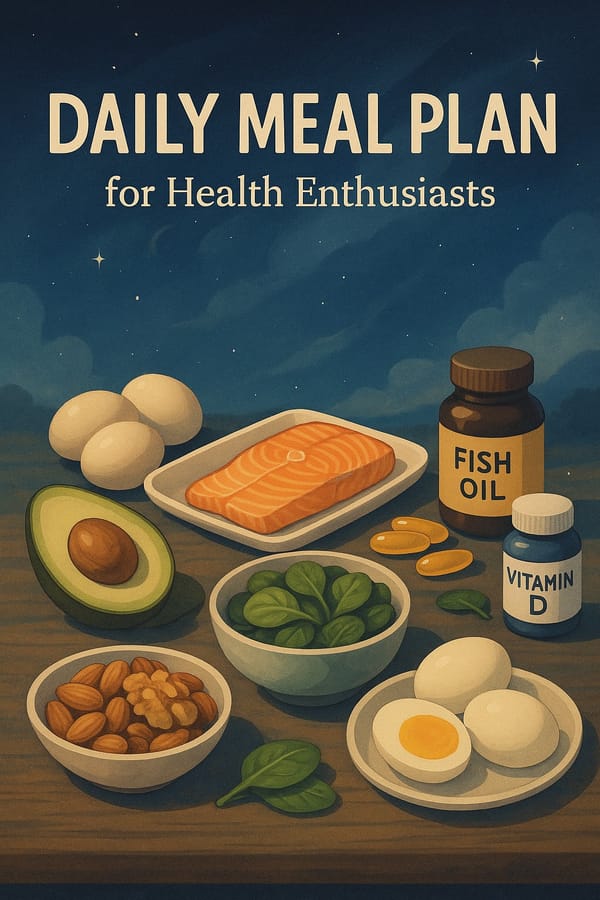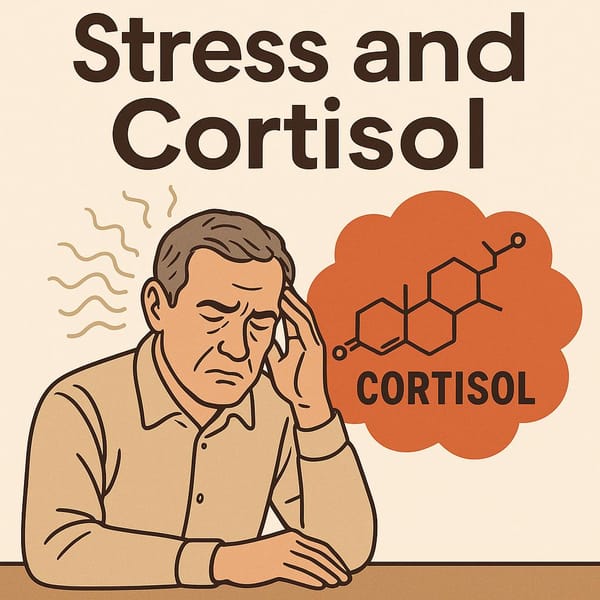How to Boost and Maintain Your Cardiovascular Fitness: Heart and Lung Health
A comprehensive guide on how to enhance your cardiovascular fitness and maintain it even in busy lifestyles. Learn effective workouts, tips for traveling or limited time, and science-based insights for a healthier heart and lungs.

Introduction
In today's fast-paced world, many of us struggle to find time for exercise, especially with demanding work schedules or extended travel. However, maintaining good cardiovascular fitness—primarily involving the heart and lungs—is critical for overall health. This is particularly true for those aged 50 and above, as the cardiovascular and respiratory systems tend to deteriorate quickly without consistent care.
This article covers:
- Effective ways to improve cardiovascular fitness.
- How to maintain your fitness level when you have little or no time to exercise, such as during long journeys.
- Science-backed tips and guidelines for safe and reliable results.
We’ll provide diverse workout strategies, ranging from high-intensity to more gentle approaches, suitable for individuals with physical limitations or limited time. The information is supported by research from reputable medical institutions and health organizations to ensure accuracy. Let's get started!
Note: This article is intended for informational purposes only. If you have medical conditions or chronic illnesses, consult a doctor before starting any new exercise regimen.
Why Is Cardiovascular Fitness So Important?
1. Reduces the Risk of Heart and Blood Vessel Diseases
A wealth of studies has demonstrated that aerobic exercises—such as running, swimming, or brisk walking—significantly reduce the risk of cardiovascular diseases (Reference: WHO).
2. Strengthens the Immune System
A well-functioning heart and lungs ensure efficient oxygen distribution throughout the body, boosting the immune system. This helps guard against infections and reduce inflammation.
3. Improves Brain and Nervous System Function
Exercise promotes increased blood flow to the brain, improving focus and memory. Mindful activities such as yoga and Pilates emphasize controlled breathing, which has been associated with better cognitive function.
4. Increases Energy and Endurance for Daily Activities
Strong cardiovascular health helps you feel more energetic and reduces fatigue in everyday tasks—whether climbing stairs or embarking on long journeys.
5. Reduces Stress and Enhances Mental Well-being
Physical activity stimulates the release of endorphins, which help alleviate stress and generate feelings of well-being. It also maintains hormonal balance, leading to improved sleep and reduced anxiety.
Effective Exercises to Boost Heart and Lung Health
Cardiovascular fitness can be improved through various methods, with or without equipment. Even if you’re short on time, brief yet targeted exercises can yield significant benefits.
1. Aerobic Exercise
Aerobic activities involve moderate to intense continuous movement that raises your heart rate, such as:
- Brisk Walking: Ideal for beginners and seniors due to its safety. Start with 15–20 minutes a day and gradually increase to 30 minutes or even up to an hour.
- Jogging: Suited for those seeking more challenging cardio. Remember to warm up beforehand and rest adequately afterward.
- Swimming: A low-impact exercise that effectively builds lung capacity. Perfect for individuals with joint or knee issues.
- Cycling: Can be done indoors (using stationary bikes) or outdoors, improving both the heart and lungs while strengthening leg muscles.
2. Interval Training (HIIT)
High-Intensity Interval Training (HIIT) alternates bursts of intense activity with intervals of rest or lower intensity, pushing the heart and lungs to work harder in short bursts. For example:
- Sprinting for 30 seconds, followed by walking for 30 seconds.
- Cycling vigorously for 20 seconds, then pedaling slowly or resting for 40 seconds.
According to research by the American College of Sports Medicine, interval training can quickly and effectively increase VO2 Max—a vital indicator of respiratory and cardiovascular fitness.
3. Resistance Training
Though heart and lung fitness is often associated with aerobic exercise, resistance training—like weightlifting or bodyweight exercises (squats, push-ups)—also contributes to cardiovascular efficiency by ensuring effective oxygen utilization in muscles and promoting fat loss, which ultimately benefits heart health.
4. Breathing-Focused Exercise
- Yoga: Certain poses help expand the chest, improving breathing capacity and flexibility.
- Pilates: Emphasizes controlled breathing and core strength, helping stabilize both muscles and respiratory function.
- Tai Chi: Slow, deliberate movements that focus on breath control and mindfulness, effectively enhancing blood circulation.
Tips for Preserving Fitness Levels When Time Is Limited
1. Micro-Workouts
For those with very tight schedules, short bursts of exercise throughout the day can replace longer sessions. This is particularly useful when traveling or having limited access to equipment.
Examples:
- Jumping Jacks: 10–20 reps.
- Squats: 10–15 reps.
- Push-ups or Planks: 30-second intervals.
- Walking or Stair Climbing: During work breaks or when waiting at the airport.
2. Exercise Density
Focus on short, high-intensity intervals rather than extended periods if you only have a few minutes to spare. For instance, do 10 minutes of brisk running or jumping rope to quickly elevate your heart rate into the aerobic zone.
3. Utilizing Apps and Wearables
Smartphone apps and fitness trackers can monitor steps, heart rate, and even short HIIT routines. Setting daily or weekly goals can keep you on track, even if you have minimal time.
4. Staying Active During Travel
- Take Breaks from Driving: If you’re on a long road trip, stop every 1–2 hours to stretch or walk for 5–10 minutes.
- Exercise on the Plane: Move around or stretch periodically during long flights.
- Use Stairs Instead of Elevators: Keep your metabolism active while staying in hotels or traveling.
Why Cardiovascular Fitness Declines Rapidly with Inactivity
- Reduced Oxygen-Carrying Capacity: With regular exercise, the body produces and maintains a high level of red blood cells. When you stop exercising, the body adapts by reducing them, leading to increased fatigue when you resume workouts.
- Weakened Heart Muscle: The heart muscle needs consistent stimulation. Without it, its pumping efficiency diminishes.
- Lower Levels of Metabolic Enzymes: When exercise ceases, certain enzymes that support energy utilization in muscles decrease, resulting in a lower overall energy output.
Research from the Journal of Applied Physiology shows that just 2–3 weeks of inactivity can result in a 5–10% drop in VO2 Max. After two months, cardiovascular fitness may decline by 20–30%.
Strategies for Long-Term Cardiovascular Fitness Maintenance
1. Scheduling
Effective time management is crucial. Set specific workout times in your personal calendar, such as 30 minutes in the morning or after work. If you have travel or meeting commitments, use alarms or notifications to reserve exercise time.
2. SMART Goals
- Specific: For instance, commit to 30 minutes of cardio.
- Measurable: Track heart rate or calories burned.
- Achievable: Avoid setting goals that are too ambitious, to prevent injury or discouragement.
- Relevant: Align goals with your desired heart and lung health.
- Time-Bound: Determine a realistic timeline, such as a weekly or monthly target.
3. Choose Enjoyable Activities
If exercise feels like a chore, you’re less likely to stick to it. Pick something you enjoy—dance classes, tennis, or badminton—to ensure consistency.
4. Social Support
Exercising with friends or family keeps you motivated. Arrange group walks, gym sessions, or create social media groups to share progress.
5. Mix Up Your Routine
Avoid monotony by combining cardio, weight training, and aerobic workouts. This holistic approach develops multiple bodily systems and prevents boredom.
6. Proper Recovery
Don’t overlook rest and quality sleep, as the body needs time to repair after workouts. Proper nutrition and hydration also support muscle and system recovery.
7. Adapt to the Environment
If the weather doesn’t allow outdoor activities—heavy rain or extreme cold—move your workout indoors or use a fitness app at home to remain consistent.
Nutrition for Heart and Lung Fitness
- Protein: Adequate protein intake helps build and repair heart and lung tissue—found in fish, chicken breast, egg whites, beans, and legumes.
- Complex Carbohydrates: Whole grains, fruits, and vegetables provide sustained energy, crucial for extended exercise sessions.
- Healthy Fats: Monounsaturated and polyunsaturated fats in olive oil, avocados, and fatty fish (salmon, mackerel) help reduce vascular inflammation and promote heart health.
- Vitamins and Minerals: Vitamins C and E (antioxidants) boost immune function, while magnesium and potassium aid muscle and nerve function.
- Hydration: Inadequate water intake lowers blood volume and reduces cardiovascular efficiency. Ensure adequate hydration, especially after workouts.
Tracking Progress with VO2 Max and Heart Rate
VO2 Max measures the maximum volume of oxygen the body can utilize per minute (in milliliters per kilogram of body weight). Increasing VO2 Max indicates improved cardiovascular and respiratory fitness. Gyms may offer specialized testing, or you can use a smartwatch that supports such measurements.
Resting Heart Rate: A lowered resting heart rate over time can signify enhanced heart muscle strength, meaning the heart pumps the same volume of blood at fewer beats.
You can also rely on personal perception, or the Rate of Perceived Exertion (RPE). If you find it easier to perform the same activities over time, or you can handle more challenging workouts without feeling excessively tired, it’s a strong sign of improved fitness.
One-Week Sample Mixed Exercise Program
Below is an example schedule designed to boost and maintain cardiovascular and muscular fitness, perfect for those with limited time:
- Monday: 30 minutes of brisk walking or jogging (moderate cardio).
- Tuesday: 20–30 minutes of upper-body resistance (push-ups, pull-ups, light dumbbell work).
- Wednesday: 15–20 minutes of HIIT (cycle or sprint intervals).
- Thursday: 20–30 minutes of lower-body resistance (squats, lunges) and core work (planks).
- Friday: Rest or do light yoga for stretching and relaxation.
- Saturday: 40–60 minutes of long, slow distance walking or jogging.
- Sunday: Active leisure, such as family walks, biking, or dance classes.
Feel free to adapt based on individual constraints. If traveling disrupts your schedule, substitute missed days with short micro-workouts.
Conclusion
A strong heart and lungs are key to a high quality of life, especially for individuals over 50. Regular, consistent exercise not only lowers the risk of cardiovascular diseases but also enhances mental health, overall strength, and stamina in daily tasks. Even a short period of inactivity can lead to a rapid decline in fitness, so it’s vital to plan and incorporate exercises that fit your lifestyle. Whether you choose aerobic workouts, resistance training, or micro-workouts throughout the day, consistency is crucial.
Don’t forget to pair your exercise routine with balanced nutrition, sufficient hydration, and adequate rest. By setting realistic goals and adapting your exercise to your environment and schedule, maintaining cardiovascular fitness becomes an achievable, lifelong journey.
Remember: A healthy body is not merely a destination but a continuous path you choose to walk every day.
Compiled by the FiftyGoFit team as a guide for maintaining heart and lung health through time-efficient exercise.
References:World Health Organization (WHO). (2020). Physical Activity. https://www.who.int/news-room/fact-sheets/detail/physical-activityAmerican College of Sports Medicine. (2018). ACSM's Guidelines for Exercise Testing and Prescription (10th ed.).American Heart Association. (2021). Recommendations for Physical Activity in Adults and Kids. https://www.heart.org/Journal of Applied Physiology. (2020). "Effects of detraining on VO2max." https://journals.physiology.org/



